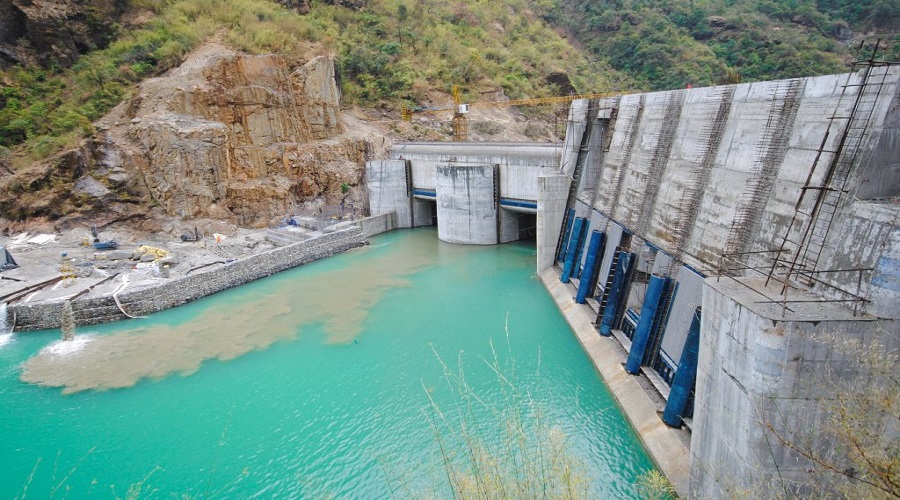KATHMANDU: Nepal’s total installed electricity capacity has now reached 3,157 megawatts (MW), marking a significant milestone in the nation’s energy sector. This achievement was highlighted by Kulman Ghising, the Executive Director of the Nepal Electricity Authority (NEA), during a press conference on Friday. Ghising emphasized that this capacity has been achieved through contributions from the NEA’s subsidiary companies and various private sector power projects.
Hydropower Dominates Nepal’s Energy Mix
Hydropower remains the backbone of Nepal’s electricity generation, accounting for 95% of the total installed capacity, which amounts to 2,991 MW. This dominance of hydropower is a testament to Nepal’s rich water resources, which have been harnessed effectively over the years. In addition to hydropower, Nepal’s energy mix includes 53 MW from thermal energy, 107 MW from solar power, and 6 MW from biomass energy.
Remarkable Growth in Power Capacity Over the Last Eight Years
The NEA has reported a remarkable growth in Nepal’s installed power capacity, with an additional 2,300 MW being added over the past eight years alone. Ghising further noted that 1,706 MW of this capacity was added in just the last three years. This rapid expansion reflects the NEA’s commitment to enhancing the country’s energy infrastructure and meeting the growing demand for electricity.
Daily Power Export and Peak Electricity Demand
NEA spokesperson Chandan Ghosh mentioned that Nepal is currently exporting around 500 MW of electricity on a daily basis. This export capacity not only strengthens Nepal’s position in the regional energy market but also contributes to the nation’s economic growth. Despite this, the current peak electricity demand within the country stands at 2,650 MW, indicating a strong and growing domestic consumption of power.
Progress in Power Purchase Agreements and Investor Interest
Eight years ago, the NEA faced challenges in signing Power Purchase Agreements (PPA) with private sector hydropower projects due to various obstacles. However, significant progress has been made since then, with the NEA opening up PPAs and setting distinct rates for different types of power projects, including reservoir-based, peaking run-of-river, run-of-river, and solar energy projects. This has led to an increase in interest from both domestic and foreign investors in Nepal’s energy sector.
Ghising stated, “Eight years ago, only 2,800 MW worth of PPAs had been signed. Due to the policies adopted to encourage private sector projects, agreements for more than 10,300 MW have now been completed.” The NEA projects that by 2028/29, Nepal’s installed electricity capacity will reach nearly 10,000 MW, underscoring the country’s ambitious energy goals.
Future Projects and Expansion of Solar Energy
To meet these ambitious targets, around 7,000 MW of power projects are currently in various stages of construction, and an additional 10,000 MW of projects are in the process of finalizing PPAs. The NEA has also prioritized the expansion of solar energy, calling for bids to conduct PPAs for an additional 800 MW of solar power. This move aligns with global trends toward renewable energy and demonstrates Nepal’s commitment to diversifying its energy sources.
Investment in Power Generation and Transmission Infrastructure
In recent years, the NEA has not only increased its revenue but has also expanded its investments in power generation and transmission infrastructure. The NEA, through its subsidiary companies, is currently constructing several key projects, including the 140 MW Tanahun Reservoir Project, the 40 MW Rahughat Project, the 37 MW Upper Trishuli 3B Project, and the 20 MW Rolwaling Project. These projects are crucial for enhancing Nepal’s electricity supply and ensuring energy security for the future.
Ongoing and Upcoming Hydropower Projects
The NEA’s subsidiary, Chilime, is leading the construction of 270 MW of hydropower projects, which are now in the final stages of development. Additionally, Chilime Hydropower Company is advancing further projects totaling approximately 300 MW. The NEA has also commenced construction on several other significant projects, including the 42 MW Upper Modi ‘A’, 18.2 MW Upper Modi, 210 MW Chainpur Seti, and 99 MW Tamakoshi Fifth projects. Financial arrangements have been completed for the 1,063 MW Upper Arun and 670 MW Dudh Koshi reservoir projects, which are now poised for construction.
Major International Collaborations and Future Plans
The NEA has reported that the 683 MW Sunkoshi-3 reservoir-based hydropower project is progressing with investments from the governments of Nepal and Bangladesh. Additionally, the detailed study process for the 10,800 MW Karnali (Chisapani) multipurpose reservoir-based project, which could serve as a model project for the South Asian region, has begun.
To manage the fluctuations between daily electricity demand and supply, and to ensure the reliability and quality of the power system, the NEA has identified approximately 42,000 MW of potential pump storage hydropower projects across various locations in Nepal. Further studies on some of the most promising projects have been advanced, highlighting the NEA’s proactive approach to future energy challenges.

